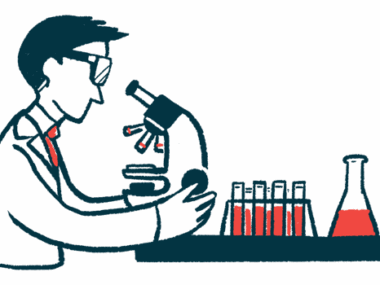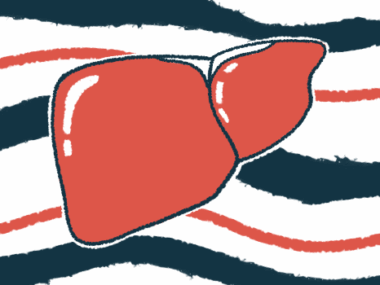Imdusiran plus immunotherapy may help in chronic hepatitis B
Treatment shows ability in Phase 2 trials to possibly eliminate infections
Written by |

In ongoing proof-of-concept Phase 2a trials, Arbutus BioPharma’s imdusiran is showing an ability to possibly eliminate chronic hepatitis B infections when used in combination with antiviral and immune-boosting therapies.
One trial, IM-PROVE I (NCT04980482), is evaluating imdusiran combined with interferon alfa-2a (IFN; sold as Pegasys), a standard-of-care immunotherapy. Meanwhile, a second study, IM-PROVE II (ACTRN12622000317796), is testing the treatment’s use in combination with VTP-300, an investigational immunotherapy from Barinthus Biotherapeutics.
In both trials, chronic hepatitis B patients are on stable antiviral treatment with nucleos(t)ide analogues (NAs).
Findings from the two studies were presented at the European Association for the Study of the Liver (EASL) Congress 2024, held earlier this month in Italy.
“These data further support our belief that lowering [viral proteins] with imdusiran and incorporating an immunomodulator in the treatment regimen has the potential to provide a functional cure for patients with [chronic hepatitis B],” Karen Sims, MD, PhD, chief medical officer of Arbutus, said in a company press release.
Combo treatment could ‘potentially lead to a functional cure’ for patients
Chronic hepatitis B, wherein liver inflammation arises due to persistent infection with the hepatitis B virus (HBV), is managed with NAs, which stop HBV from replicating in the body, and IFN, which increases the immune system’s ability to fight the virus.
These treatments help slow or prevent the development of more serious liver complications that can happen when HBV infection is not controlled. However, few patients see the deep and sustained viral suppression that would equate to a functional cure whereby therapy is no longer needed.
Arbutus believes that achieving such a cure requires a three-pronged approach involving suppression of HBV’s DNA, lowering levels of HBsAg — an HBV protein that’s critical for its ability to infect cells and escape the immune system — and boosting immune responses.
Imdusiran is a liver-targeted therapy that uses an approach called RNA interference to suppress viral replication and production of all HBV proteins, including HBsAg. Combined with NA therapy and immune-boosting treatments, this is expected to address all three prongs.
IM-PROVE 1 is testing imdusiran at a dose of 60 mg, in combination with NA and IFN, in 43 chronic hepatitis B patients on stable NA regimens. The treatment’s being given as a subcutaneous or under-the-skin injection every two months.
After six months on imdusiran and NA, patients are randomly assigned to receive imdusiran and weekly IFN, or IFN alone, for another three or six months while continuing NA. After that, patients are followed for six months on NA alone to assess their ability to stop that treatment.
Data from a poster presentation showed that more patients in the six-month IFN groups achieved undetectable HBsAg levels than did those in the three-month groups, and rates of undetectable HBsAg were even higher in patients also on imdusiran.
A total of six patients achieved undetectable HBsAg levels by the end of the six-month IFN treatment, which were sustained for six months after stopping it.
This trial evaluated small groups of patients, yet there is reason to believe that the combination of imdusiran and IFN [interferon alfa-2a] could potentially lead to a functional cure in those patients that remain off all therapy.
Altogether, 21 patients across all four treatment groups met the criteria for stopping NA and are now being followed without any form of treatment. One has achieved what researchers would deem a functional cure, with undetectable HBsAg and HBV levels for six months without treatment, according to the company.
“This trial evaluated small groups of patients, yet there is reason to believe that the combination of imdusiran and IFN could potentially lead to a functional cure in those patients that remain off all therapy,” said Man-Fung Yuen, MD, PhD, of the University of Hong Kong, who presented the findings.
“These data are extremely important for the HBV community, and I look forward to continuing to follow the patients who have discontinued all treatment,” Yuen added.
IM-PROVE I and II testing imdusiran combos in chronic hepatitis B patients
For its part, IM-PROVE II is testing the safety and effectiveness of combining imdusiran, NA, and VTP-300 — an investigational vaccine designed to boost the immune system’s ability to target HBsAg — in people with chronic HBV infections.
The study enrolled 40 patients, all of whom received imdusiran plus NA for about six months. Then, patients were randomly assigned to receive either VTP-300 or a placebo, given through two intramuscular injections separated by one month.
At the end of the year-long treatment period, patients who met certain response criteria could stop NA therapy and were followed for up to nearly another year. Those who continued on NA were followed for six months.
Kosh Agarwal, MD, of the Institute of Liver Studies at King’s College Hospital, in London, discussed interim findings from 38 of the 40 participants in an oral presentation at the EASL Congress in Milan.
According to the trial data, imdusiran led to robust HBsAg level reductions, with 95% of patients achieving a level below 100 international units per milliliter (IU/mL). A greater proportion of patients subsequently treated with VTP-300 were able to maintain HBsAg below 100 IU/mL or 10 IU/mL than were those on the placebo.
Six months after treatment ended, HBsAg levels were significantly lower in patients given VTP-300, with 60% reaching levels under 10 IU/mL, compared with none in the placebo group.
More patients in the VTP-300 treatment arm (84%) met the criteria for stopping NA therapy after the first year compared with placebo (53%).
“Imdusiran consistently provides notable reductions in HBsAg prior to combining with other therapies, such as VTP-300, which may improve the response rates of these immunomodulatory approaches,” Sims said in a separate company press release.
Across the two trials, transient liver enzyme elevations and injection site reactions were the most common side effects of imdusiran. Injection site reactions were the most common side effect associated with VTP-300, and the safety profile of IFN was consistent with its known effects.
IM-PROVE II is now testing imdusiran in combination with NA, VTP-300, and low-dose nivolumab, an antibody-based immunotherapy that’s already used for cancer. That group is completely enrolled and data are expected by year’s end.






